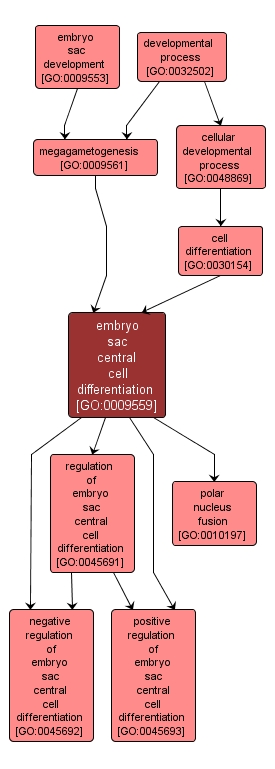GO TERM SUMMARY
|
| Name: |
embryo sac central cell differentiation |
| Acc: |
GO:0009559 |
| Aspect: |
Biological Process |
| Desc: |
The process whereby the two uncellularized polar nuclei cellularize, fuse and acquire the specialized features of a mononucleate diploid central cell. |
Synonyms:
- embryo sac endosperm mother cell differentiation
- female gametophyte central cell differentiation
|
|

|
INTERACTIVE GO GRAPH
|














